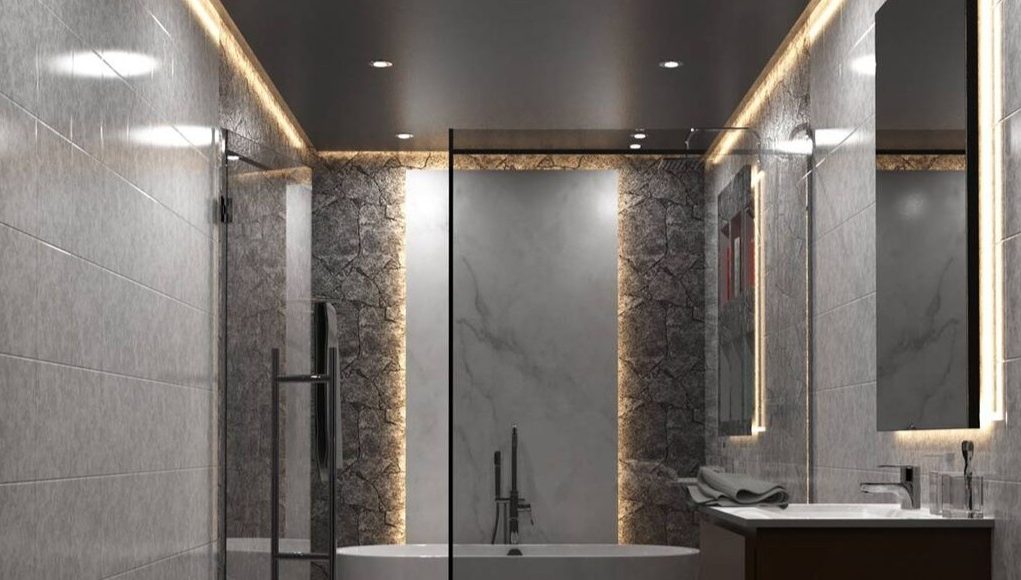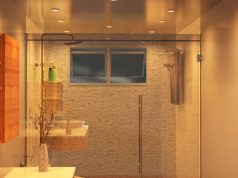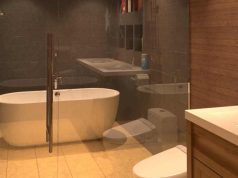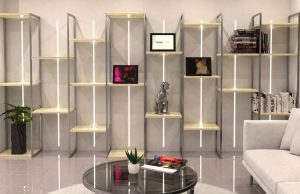Bathrooms often get done dirty. They’re usually last on the renovation list, lit like a hospital corridor, and rarely treated as the design-worthy spaces they are.
But here’s the thing: Swap the sad ceiling bulb for waterproof LED strips, and suddenly you’ve got atmosphere, style, and a space you actually want to spend time in.
LED strips aren’t just lights. They’re mood-setters, detail-enhancers, and smugness-generators (“Oh, these? Just a little lighting upgrade”). And because they’re designed for wet zones, you don’t have to fear the whole toaster-in-the-bath scenario.
Why Waterproof LED Strips Are Perfect for Bathrooms
If bathrooms could talk, they’d probably say, “I’m practical but boring.” Waterproof LED strips flip that script.
- Subtle presence. They don’t hog attention, but they make the room look instantly smarter.
- Shape-shifters. They bend, twist, and trim to size. Basically, they’re lighting’s answer to yoga!
- Safe in steam. Rated for damp zones, many downlights can survive showers that turn your bathroom into a sauna.
- Sharp looks. The clean, modern lines scream “interior designer” without the eye-watering invoice.
LED strips are the quiet overachievers of lighting. They’re always working, never bragging.
Understanding IP Ratings for LED Strips in Wet Areas
Nobody in their right mind would wear suede shoes in a rainstorm. The same logic applies here. If your LEDs aren’t waterproof, they’ll die faster than your neglected houseplants.
- IP65. Splash-resistant. Fine for mirrors, shelves, and places that only get the occasional misting.
- IP67. Properly waterproof. Good for shower alcoves, near basins, and spots where water likes to play.
- IP68. Submersible. Necessary only if you’re planning to light the inside of your bath like a nightclub punch bowl.
Moral of the story: Check the IP rating before making a purchase. Your bathroom will test it, whether you think so or not.
Where to Use LED Strips in the Bathroom
Bathrooms are full of dark corners just waiting to be upgraded. LED strips slip in almost anywhere.
- Under vanities. Add a floating effect and make your cabinet look more high-end than it is.
- Behind mirrors. Hide the horrors of inadequate sleep and poor skincare routines with flattering, even light.
- Shower niches. Turn your shampoo graveyard into a feature wall.
- Shelves and recesses. Highlight your perfectly rolled towels (or pretend you rolled them).
- Bath panels. Enjoy halo lighting that turns a standard tub into a “staycation” spa.
It’s like giving your bathroom a contouring treatment. It suddenly looks sharper, cleaner, and more intentional.
Benefits of LED Strips Over Traditional Bathroom Lighting
Ceiling lights and spotlights have had their moment. They light things up, yes. But stylish? Not really.
- Continuous glow. LED strips offer smooth lines of light, with no awkward blotches or shadows.
- Slim fit. They sneak into places spotlights can only dream of.
- Energy efficiency. You can keep them on all night for ambience without feeling like you’re funding the power grid.
- Design freedom. Straight lines, curves, hidden corners, your imagination gets to run wild.
Think of them as the difference between cheap blinds and custom shutters. Both do the job. One does it with style.
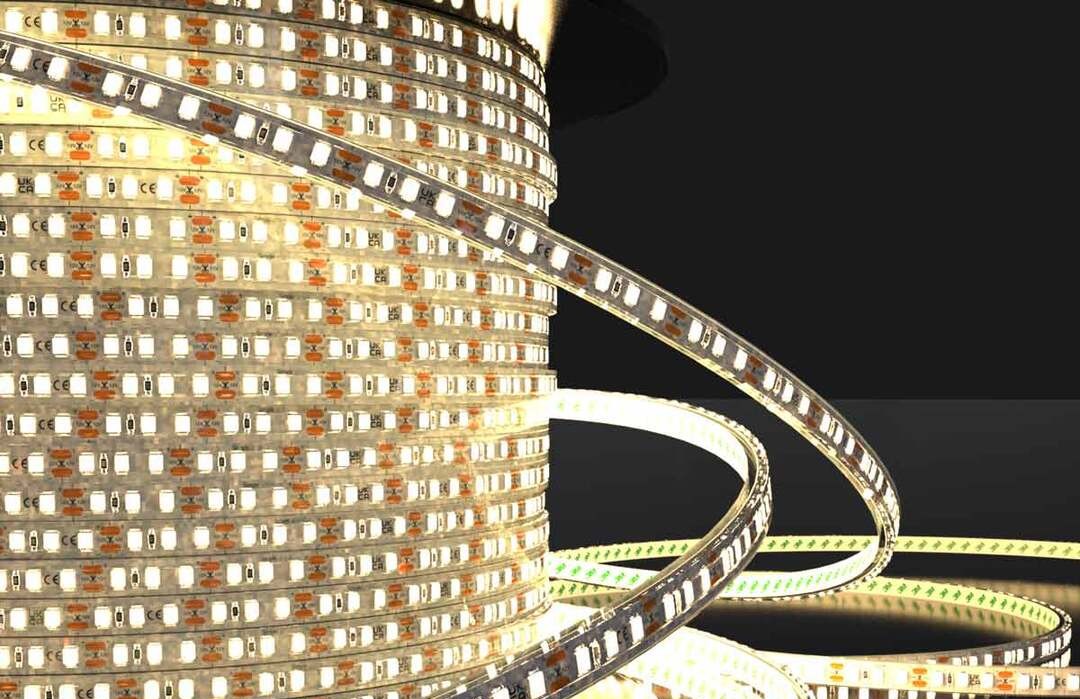
Choosing and Installing Bathroom-Safe LED Strips
Here’s where things get interesting. Not all LED strips are built the same, and bathrooms are particularly unforgiving. Get it wrong, and you’ll have flickering lights and regrets.
Picking the Right Colour Temperature and Brightness
Your bathroom’s vibe changes depending on your lighting. Warm tones invite relaxation; cool tones scream “dentist’s office.”
- Warm white (2700K to 3000K). Cosy, golden, and perfect for long baths where the only agenda is ignoring emails.
- Neutral white (3500K to 4000K). The Goldilocks option—balanced, flattering, and practical.
- Cool white (5000K to 6000K). Bright, sharp, and suitable for precision tasks like shaving without taking off half an eyebrow.
And then there’s brightness:
- Accent lighting. 150 to 300 lumens per metre. Enough to look good, not enough to blind.
- Task lighting. 400 to 600 lumens per metre. Functional brightness without interrogation vibes.
Pick wisely. Lighting can either flatter you or betray you.
Using LED Profiles and Diffusers for a Finished Look
Raw LED strips are like unhemmed trousers. They technically work, but they look unfinished. Profiles and diffusers fix that.
- Profiles. Aluminium housings that keep strips straight, tidy, and less vulnerable to steam or knocks.
- Diffusers. Covers that smooth the light, banish those annoying dots, and make the glow seamless.
Together, they add polish, protection, and longevity. Skip them, and your bathroom will look less “high-end spa” and more “student rental.”
Tips for a Professional-Grade Finish
If you want your bathroom to look expensive (without actually being expensive), here’s the cheat sheet:
- Measure like a perfectionist. Strips that stop short or overlap corners are design crimes.
- Seal the ends. Condensation will find its way in if you don’t.
- Hide the boring bits. Drivers, controllers, and wiring should be invisible. If you can see them, you’ve failed.
- Add controls. Dimmers or smart switches mean you can flick from “bright and awake” to “romantic bath” instantly.
- Buy decent quality. Cheap strips fade, flicker, or die. Don’t fall for the false economy.
Good lighting is about details, and details are what separate the showroom look from the DIY disaster.
Wrapping Up: Glow Up Your Bathroom
The days of a single ceiling bulb ruling your bathroom are over. Waterproof LED strips allow you to create a space that feels modern, indulgent, and, frankly, more “you.”
Get the IP rating right, match colour temperature to the mood you want, and always finish with profiles and diffusers. Do all that alongside getting products from Simple Lighting, and you’ll have a bathroom that makes even your Monday mornings bearable.
Want more bathroom lighting insights? Get more on the Bathroom Lighting Buyers Guide.


